The History Of Infiniti Q45
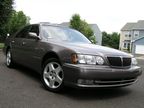
The Infiniti Q45 is a full-size luxury car that served as the flagship of Nissan's Infiniti marque from 1990 until 2006, when the Q45 was no longer exported. It is a rear wheel drive sedan powered by a V8 engine, which was the sole powertrain. The original Infiniti Q45 was based on the Japanese-market Nissan President (the flagship sedan of Nissan), but later generations were based on the slightly lower-end Nissan Cima. The Q45 competed most directly with the Lexus LS and Acura Legend, as well as the higher-priced BMW 7 Series, and Mercedes-Benz S-Class.
The first Q45 came to market in 1989 as 1990 model. Car magazines and reviewers were impressed by the Q45's performance such as a 0-60 mph acceleration time of 6.7 seconds, and its high-output 4.5 L V8 engine rated at 278hp (207kW) and 292lb·ft (396N·m) of torque though many enthusiasts often claim a true power rating of over 300hp (224kW). At the time, its targeted competitors such as the Mercedes S-Class, BMW 7 Series, Jaguar XJ and Cadillac Fleetwood had much bigger engines with horsepower ratings in the lower 200hp (150kW) range and 0-60 mph times at an average of 10-11 seconds. All Q45s include a VLSD (viscous limited-slip differential), whereas the Lexus LS never did.
In terms of styling, the Q45 was a distinctive vehicle. Infiniti attempted to redefine the modern luxury sedan by offering a car with rather spartan amenities such as firm leather seats instead of cushy couch-like seats and no chrome or woodgrain interior trim. The Q45's grille also caused buyers to shy away because of its unusual appearance. A more conventional appearance (including a more conservative grille, woodgrain/ chrome interior trim and cushy seats), more sedated performance figures, slower 17:1 steering (except on the Q45t, which retained the original 15.1:1 ratio), and a dynamically smooth suspension were all added in 1994 to make it a more status-quo luxury sedan. Thicker glass, keyless remote, auto-dim rearview mirror, dipping side view mirrors, an improved transmission heat exchanger and external ATF filter, new oval intake ports and revised disc injectors, lower ratio 1st and 2nd gears, fog lights, and metal backed camshaft timing chain guides were added in 1994.
The Q45 came in three variations: base, Q45t and Q45a. The Q45t and Q45a featured a rear stabilizer bar (with the a model being larger in diameter) and both models having a 1 mm smaller in diameter front sway bar, rear spoiler, BBS Kraftfahrzeugtechnik AG forged alloy wheels, 4-wheel steering and Q45a featured also active suspension. HICAS and the faster steering ratios was discontinued in the 1995 Q45t model and the Q45a model was not imported in 1996.
While Toyota's Lexus LS was a stunning success, Infiniti Q45 sales never took off due in part to a notorious advertising campaign which did not include actual photos or information about the car. Poor sales were also blamed on the car's unconventional styling. In Japan, this model was later sold as the Nissan Infiniti Q45 rather than the "Nissan President".
The G50 chassis continued in production in Japan until 2002 as the President in both regular and extended wheelbase versions. The Japanese version had many options that never appeared on the North American G50.
The Q45 was moved off the Nissan President platform to the new lower-end Nissan Cima platform in 1997. This Q45 had a more conventional appearance and a smaller 4.1L VH41DE engine that produced 266hp (199kW) and acceleration figures of 0-60 in 7.5 seconds (compared to 7.0 seconds for the 1997 Lexus LS). From this model, both the Q45 and the Cima were merged together. The all-multilink suspension was changed to struts at the front end, and was further tuned for comfort. The steering slowed down even more to an 18.5:1 ratio. Traction control was standard. None of this did much to help the car's sales; Q45 sales in the North American market remained much lower than sales of its primary competitor, the Lexus LS.
The 2000 Q45 Anniversary Edition was the highest trim level available for the second-generation Q45. This trim level was standard on the 2001 models. The Q45t was the most expensive vehicle in the Infiniti (excluding the AE for 2000) lineup and offered enhanced performance, a rear spoiler, heated seats, dynamically adjusted shock absorbers and other luxurious features not available in a standard Q45.
The car's appearance was slightly altered for 1999. For this year, HID headlights were added and the analog clock returned. Minor styling changes were made to the front and rear fascias. 17" wheels and an electronic adjustable suspension became standard on the Q45t. Numerous safety improvements in 1998 model were augmented in the 1999 and 2000 models.
Standard features for the second-generation Q45 included a leather interior with fake woodgrain trim, but no dual climate control, a Bose audio system with eight speakers with an in-dash single disc CD player, auto dimming rear view mirror, automatic light on and delay off timer, and steering wheel-mounted cruise control and head unit control. Also standard was a memorized adjustment system for the driver's seat and steering wheel. A CD changer and heated seats were available as options.
The car was sometimes derisively referred to as the "Q41" due to its reduced displacement and lesser performance. Nearly all Infinitis before or since have used a two-digit number following a letter to indicate displacement; the second-generation Q was an exception (as was the Nissan Pathfinder clone QX4).
The Q45 was completely redesigned for 2002, now based on the new platform shared by both the Cima and the President. This Q45 focused on performance again with a new 340hp (253kW) 4.5L VK45DE V8 engine, gatling gun inspired HID headlights, and sharper styling. The car featured a 5-speed automatic transmission with overdrive. Despite good reviews, sales remained poor — just 1129 were sold in the United States for all of 2005.
This Q45 has received praise from Car and Driver, Edmunds and Consumer Guide. Low sales are attributed not to the car’s overall quality or performance, but to lack of advertising and the debatable prestige of the Infiniti name.
The 2003 was given a number of under the skin upgrades including a new security system, a numerically higher final drive ratio (for better acceleration - decreasing highway fuel economy), reprogrammed TCU, and during the year, a satellite radio option. The CD player was now a one at a time feed into the dash. The Q45 received a number of upgrades for the 2005 model year, including new front and rear fascias, restyled hood and grille, restyled trunk lid, new headlight design, integrated fog lights and LED taillights. Inside were new contoured double-stitched seats, white luminescent gauge markings, chrome accents and dark maple trim. 2005 upgrades also included a recalibrated transmission and new 17" alloy wheels.
The following features were standard in the Q45: all-leather interior, power sunroof, 8-way power front seats, remote keyless entry, rain-detecting wipers and side curtain airbags. Standard electronics include: CD, 8 Bose speakers, trip computer, rear camera parking sensors and a voice-activated navigation system. The 2002 Q45 was the first vehicle to ever offer voice-activated navigation controls.
The car seated five and had a base price of US$56,200.
This F50 chassis and suspension is very similar to the US FY33 (1997-2001 Q45). The F50 was also used as a basis for the Y34 M45, sold in the US from 2003-2004, which was a stopgap model that could spread out the development costs of the V8 engine, and that competed primarily in the midsize luxury segment.
The Q45 was no longer exported to the USA after 2006, being replaced by a newly redesigned M35 and M45. The M is actually classified as a United States Environmental Protection Agency "large" category depending on which option packages are selected. While the M45 has a shorter length than the Q45, it boasts more interior room, greater performance, a superior rear multilink suspension and front double wishbone, and much friendlier ergonomics, so it succeeded the Q45 as Infiniti's flagship. Though this move left Infiniti without an offering in the full-sized luxury market, Q45 sales had been tepid throughout the nameplate's lifetime, while the new M was an instant success despite the crowded midsize segment.
A new Q flagship is expected by the end of the decade. According to Mark Igo, the general manager of Infiniti North America, the new Q will make the brand better, but it is questionable whether it will be very profitable.
From Wikipedia, the free encyclopedia
More About Infiniti Q45
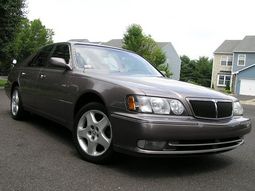
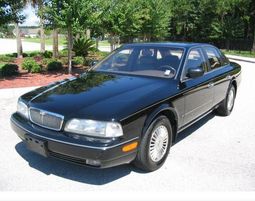


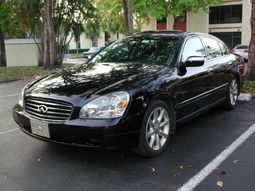
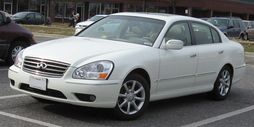
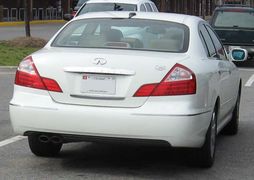
|